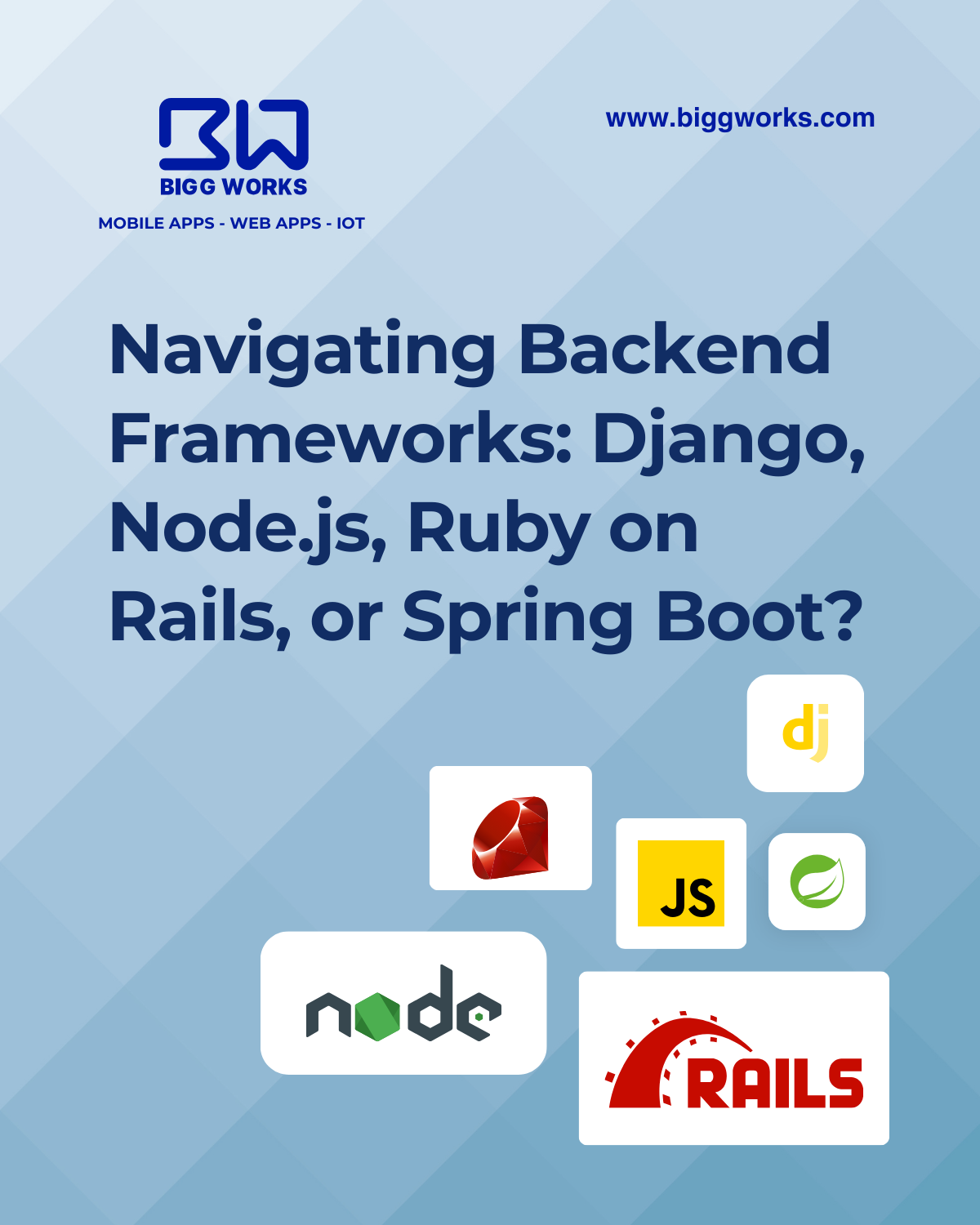Navigating Backend Frameworks: Django, Node.js, Ruby on Rails, or Spring Boot?

Selecting the ideal backend framework is a pivotal decision in web development. This article delves into the advantages and disadvantages of four prominent options: Django, Node.js, Ruby on Rails, and Spring Boot. By understanding their unique features, developers can make informed decisions that align with their project's goals.
Rapid Development:Django's robust features enable fast development, particularly for data-driven applications.
Batteries Included:Django includes built-in admin panels, authentication systems, and an ORM for seamless database operations.
Scalability:Django's modular design allows for scalability, making it suitable for projects of various sizes.
PLearning Curve:Django's comprehensive nature might require a learning curve for newcomers.
Flexibility:While Django offers powerful tools, it might limit flexibility for unique use cases.
Asynchronous Nature:Node.js excels in handling high concurrency and real-time interactions.
Unified Language:JavaScript on both frontend and backend (Node.js) promotes uniformity in codebase.
Vast Ecosystem:A rich package ecosystem (npm) and frameworks like Express.js expedite development.
Callback Hell:Managing complex asynchronous code might lead to callback hell.
CPU-Intensive Tasks:Node.js might not be the best choice for CPU-bound tasks.
Conventions over Configurations:Rails' opinionated approach speeds up development through automated configurations.
Developer-Friendly:Ruby's readability and Rails' intuitive design make it an ideal choice for developers.
Active Community:A vibrant community offers support, plugins, and extensions.
Performance:Rails might not be as performant as some other frameworks for certain tasks.
Learning Curve:While developer-friendly, Rails might require adaptation for developers experienced in other languages.
Modularity:Spring Boot's modular design allows developers to select components as needed.
Enterprise-Grade:Spring Boot is renowned for building robust and scalable enterprise applications.
Familiarity:If your team is familiar with Java, Spring Boot provides a familiar environment.
Learning Curve:Spring Boot's configuration and annotations might require a learning curve.
Verbose Code:Java's verbosity might result in longer code compared to some other languages.
The choice between Django, Node.js, Ruby on Rails, and Spring Boot depends on your project's nature, your team's expertise, and your desired development speed. Consider these factors:
Project Type:Django's rapid development suits data-driven applications, while Node.js excels in real-time interactions.
Team Expertise:Opt for a framework aligned with your team's proficiency to expedite development.
Scalability:Spring Boot's enterprise-grade capabilities might be advantageous for larger projects.
Learning Curve:Evaluate your team's familiarity with the chosen framework's languages and technologies.
By delving into the strengths and weaknesses of Django, Node.js, Ruby on Rails, and Spring Boot, developers can make an educated decision that best serves their project's needs. Each framework offers a distinct approach, catering to different development preferences and project requirements. Embrace the framework that aligns with your team's skills and your project's objectives, setting the stage for a successful backend development journey.
#WebDevelopment #WebApps #WebDesign #FrontEnd #BackEnd #Programming #Coding #SoftwareEngineering #UIUX #FullStack #JavaScript #HTML #CSS #ReactJS #NodeJS #PHP #Python #WebDeveloper #MERN #MEAN